Arena Pro Swim Series at AustinJun 22, 2017 by Ben Colin
Diving Into The Arena Pro Swim Series Part I: Attention Is Building
Diving Into The Arena Pro Swim Series Part I: Attention Is Building
This article features USA Swimming's annual circuit of swim meets, the arena Pro Swim Series which highlights the best swimmers in the United States and the world. The series offers prize money to top performers.
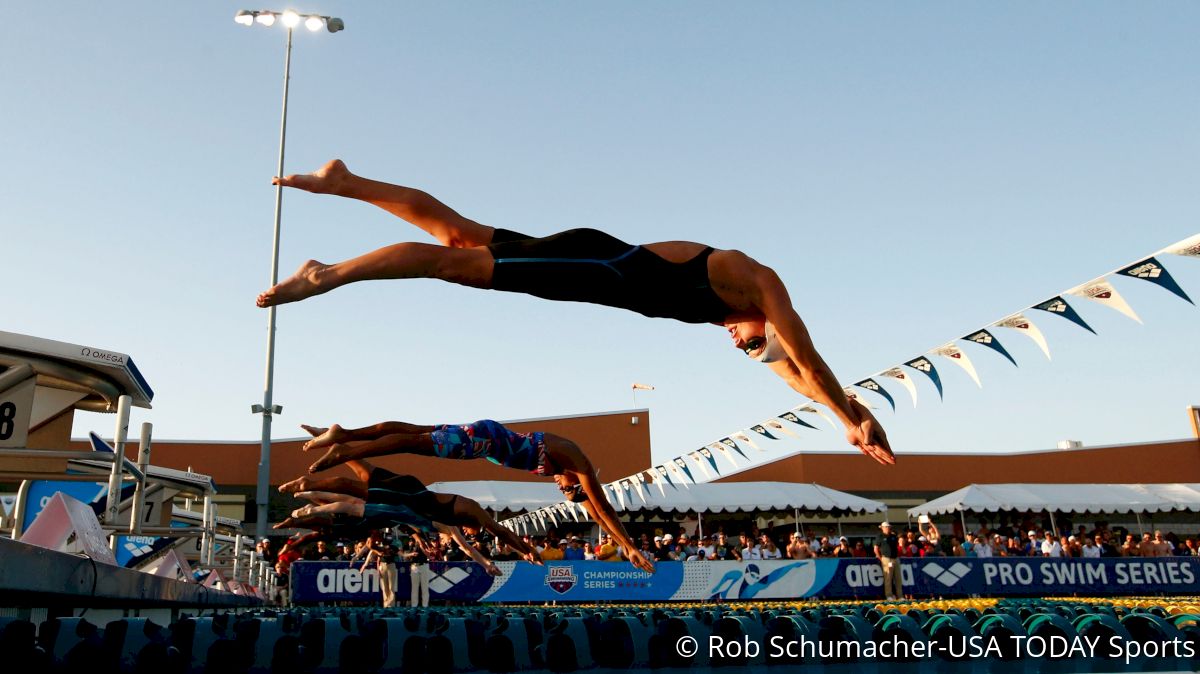
The arena Pro Swim Series is USA Swimming's way of gathering the sport's best on multiple occasions throughout the year. Like other sports, this has evolved into a for-fans swimming event.
Swimming is at a tough point, trying to figure out what to do without superstar Michael Phelps. A professional swim circuit that gathers the remaining fan favorites is exactly what the sport needs to keep its audience engaged.
The Pro Series is more than just a compilation of swim meets, although that is exactly what it appears to be. It is growing from its early form as the Grand Prix Series into a regular season that builds excitement for the National Championships.
Four areas stood out in regard to the series' long evolution, the first of which we are examining today:
This year's arena Pro Swim Series wrapped up a few weeks ago in Santa Clara, CA, marking the end of another regular season of elite swimming.
The next step from USA Swimming's championship series is the National Championships, which will actually contribute points toward the Pro Series standings. The elite circuit of meets presents fans with top-level competition in their preparation for the championships at the end of June.
Every four years, the Olympic Team Trials captivate the swimming community and accumulate new viewers. Olympic years, in the minds of many, are the one time every four years that it's all right to sit back and watch swimming. That mindset is on the way out.
USA Swimming began publishing a yearly events calendar in its rules and regulations handbook in 1997 that included more than just the National Championships. That year, the "Grand Prix Series" appeared on the schedule four times in locations across the country. Seattle, Phoenix, Charlotte, and Los Angeles were home to that year's swimming regular season.
"Our sport isn't like any other sports, especially the NFL where there is a regular season game that means something each week," three-time Olympic gold medalist Rowdy Gaines said. "In swimming, there wasn't anything like that until now with Pro Swim Series."
Other sports are able to build anticipation for their postseasons with storylines throughout the regular season. Baseball has 162 games, and football has 16 games. But swimming, without the Pro Series, is limited to whatever meets the talent chooses -- no stories or great competition from a set lineup of meets.
Having meets to watch, and compete in, add to the excitement when the championships roll around. Fans remember back to the Michael Phelps return meet in Charlotte or to any number of Katie Ledecky's record-breaking performances.
It is memorable moments and top athletes that drive swimming's regular season.
"We've had the fortune of a great level of quality from both United States and international swimmers," USA Swimming chief marketing officer Matt Farrell said. "Even Matt and Annie Grevers' proposal added to the promotion of the event."
During an Olympic year, there is no better preview. This past year offered seven meets over the months leading up to the Rio Games. Each built hype, especially a Ledecky world record at the second meet in Austin, Texas.
Olympians and those hopeful to make the team would flock to the Janet Evans Invitational in Los Angeles or to the International Meet in Santa Clara in the early years to get big-meet experience. Once the series came about, it absorbed those meets and added countless others to strengthen the competitive field each year.
Where meets previously were mostly limited to regional athletes, now swimmers from across the country seek out meets listed under the series' umbrella. As the event grew, and gained sponsorships, its reach hit more regions.
Growing the series meant moving to new locations. By 2000, the series had visited Florida, Michigan, and New York. After the 2004 season, Indiana, Minnesota, and Texas all had been added to the list.
Over the last 20 years, the series made a stop in 14 different states with at least one in each USA Swimming zone. Out of four zones, the Eastern held the fewest. The only stop came in East Meadow, New York, in the early 2000s.
Major sponsorship accelerated the events' development. Along with prize money and great venues, Farrell listed sponsorship activation as an area that has greatly contributed to the rising attention.
The 2000 series was referred to as the "Cadillac Swim Series," which later had a manufacturing switch to Toyota as the title sponsor. Since 2013, Arena has occupied the primary partnership which grants naming rights, hence the Arena in the title.
The swimwear company's relationship with the Pro Series is much more than just a name though.
"What we didn't want to do from day one was logo slap," said Steve Ozmai, director of marketing for Arena North America. "We didn't want to put our logo on the event and walk away. We really wanted to use this for communication."
The mission Arena was ultimately pushing, other than advertising for its own brand, was to grow the sport of competitive swimming. Creating a professional circuit with a name to mirror what is in the water was of big importance.
After the 2014 summer, the name changed on the series. Grand Prix, typically synonymous with auto racing, headed out and made room for a new name. The Pro Swim Series presented the image that organizers wanted for their competitions.
"From the day we started, it was an issue we wanted to change," Ozmai said. "Grand Prix is something you hear with F1. It's not endemic to swimming and wouldn't help to grow the sport."
Some motivation for the change stemmed from creating a name that emphasized the professional aspect. Arena emphasized drawing fans to swimming in non-Olympic years. In the company's mind, having a professional-sounding name would attract fans who were still on the fringe to watch.
Putting professional swimmers in the pool six times each year in an atmosphere that brews fast swimming met exactly what USA Swimming and Arena hoped for the series. World-class talent attracts the average swimmer or swimming fan.
Postseason series' captivate fans, especially those who only watch when the season is on the line. USA Swimming has created a way to crown an individual champion at the year's conclusion. Normally, swimmers would race individual meets, but the series creates an incentive for an overall champion.
The Pro Series growth stems from USA Swimming mirroring the successes of other sports leagues. It caught fans' attention by hitting similar aspects that have propelled the "big four" sports.
Stay tuned for Part II -- Competition Between Meets, Where Does the Pro Series Rank?
---
Swimming is at a tough point, trying to figure out what to do without superstar Michael Phelps. A professional swim circuit that gathers the remaining fan favorites is exactly what the sport needs to keep its audience engaged.
The Pro Series is more than just a compilation of swim meets, although that is exactly what it appears to be. It is growing from its early form as the Grand Prix Series into a regular season that builds excitement for the National Championships.
Four areas stood out in regard to the series' long evolution, the first of which we are examining today:
Part 1: Attention is Building for Swimming's Premier Series
This year's arena Pro Swim Series wrapped up a few weeks ago in Santa Clara, CA, marking the end of another regular season of elite swimming.
The next step from USA Swimming's championship series is the National Championships, which will actually contribute points toward the Pro Series standings. The elite circuit of meets presents fans with top-level competition in their preparation for the championships at the end of June.
Every four years, the Olympic Team Trials captivate the swimming community and accumulate new viewers. Olympic years, in the minds of many, are the one time every four years that it's all right to sit back and watch swimming. That mindset is on the way out.
USA Swimming began publishing a yearly events calendar in its rules and regulations handbook in 1997 that included more than just the National Championships. That year, the "Grand Prix Series" appeared on the schedule four times in locations across the country. Seattle, Phoenix, Charlotte, and Los Angeles were home to that year's swimming regular season.
"Our sport isn't like any other sports, especially the NFL where there is a regular season game that means something each week," three-time Olympic gold medalist Rowdy Gaines said. "In swimming, there wasn't anything like that until now with Pro Swim Series."
Other sports are able to build anticipation for their postseasons with storylines throughout the regular season. Baseball has 162 games, and football has 16 games. But swimming, without the Pro Series, is limited to whatever meets the talent chooses -- no stories or great competition from a set lineup of meets.
Having meets to watch, and compete in, add to the excitement when the championships roll around. Fans remember back to the Michael Phelps return meet in Charlotte or to any number of Katie Ledecky's record-breaking performances.
It is memorable moments and top athletes that drive swimming's regular season.
"We've had the fortune of a great level of quality from both United States and international swimmers," USA Swimming chief marketing officer Matt Farrell said. "Even Matt and Annie Grevers' proposal added to the promotion of the event."
During an Olympic year, there is no better preview. This past year offered seven meets over the months leading up to the Rio Games. Each built hype, especially a Ledecky world record at the second meet in Austin, Texas.
Olympians and those hopeful to make the team would flock to the Janet Evans Invitational in Los Angeles or to the International Meet in Santa Clara in the early years to get big-meet experience. Once the series came about, it absorbed those meets and added countless others to strengthen the competitive field each year.
Where meets previously were mostly limited to regional athletes, now swimmers from across the country seek out meets listed under the series' umbrella. As the event grew, and gained sponsorships, its reach hit more regions.
Growing the series meant moving to new locations. By 2000, the series had visited Florida, Michigan, and New York. After the 2004 season, Indiana, Minnesota, and Texas all had been added to the list.
Over the last 20 years, the series made a stop in 14 different states with at least one in each USA Swimming zone. Out of four zones, the Eastern held the fewest. The only stop came in East Meadow, New York, in the early 2000s.
Sponsorships Enter The Picture
Major sponsorship accelerated the events' development. Along with prize money and great venues, Farrell listed sponsorship activation as an area that has greatly contributed to the rising attention.
The 2000 series was referred to as the "Cadillac Swim Series," which later had a manufacturing switch to Toyota as the title sponsor. Since 2013, Arena has occupied the primary partnership which grants naming rights, hence the Arena in the title.
The swimwear company's relationship with the Pro Series is much more than just a name though.
"What we didn't want to do from day one was logo slap," said Steve Ozmai, director of marketing for Arena North America. "We didn't want to put our logo on the event and walk away. We really wanted to use this for communication."
The mission Arena was ultimately pushing, other than advertising for its own brand, was to grow the sport of competitive swimming. Creating a professional circuit with a name to mirror what is in the water was of big importance.
Shifting From "Grand Prix" to "Pro Swim Series"
After the 2014 summer, the name changed on the series. Grand Prix, typically synonymous with auto racing, headed out and made room for a new name. The Pro Swim Series presented the image that organizers wanted for their competitions.
"From the day we started, it was an issue we wanted to change," Ozmai said. "Grand Prix is something you hear with F1. It's not endemic to swimming and wouldn't help to grow the sport."
Some motivation for the change stemmed from creating a name that emphasized the professional aspect. Arena emphasized drawing fans to swimming in non-Olympic years. In the company's mind, having a professional-sounding name would attract fans who were still on the fringe to watch.
Putting professional swimmers in the pool six times each year in an atmosphere that brews fast swimming met exactly what USA Swimming and Arena hoped for the series. World-class talent attracts the average swimmer or swimming fan.
Postseason series' captivate fans, especially those who only watch when the season is on the line. USA Swimming has created a way to crown an individual champion at the year's conclusion. Normally, swimmers would race individual meets, but the series creates an incentive for an overall champion.
The Pro Series growth stems from USA Swimming mirroring the successes of other sports leagues. It caught fans' attention by hitting similar aspects that have propelled the "big four" sports.
Stay tuned for Part II -- Competition Between Meets, Where Does the Pro Series Rank?
---
Do you love swimming? Let us deliver it to your inbox!
Don't miss breaking news, feature stories, event updates, and more. Sign up for the FloSwimming mailing list today.Related Content
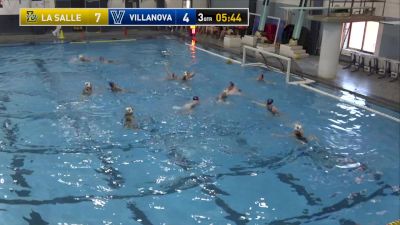 Replay: Le Salle vs Villanova - WWP - 2024 La Salle vs Villanova | Apr 7 @ 3 PM
Replay: Le Salle vs Villanova - WWP - 2024 La Salle vs Villanova | Apr 7 @ 3 PMApr 7, 2024
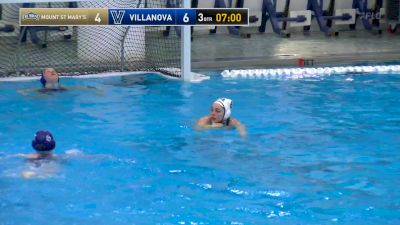 Replay: Mount St. Mary's vs Villanova - WWP - 2024 Mount St. Mary's vs Villanova | Apr 6 @ 7 PM
Replay: Mount St. Mary's vs Villanova - WWP - 2024 Mount St. Mary's vs Villanova | Apr 6 @ 7 PMApr 7, 2024
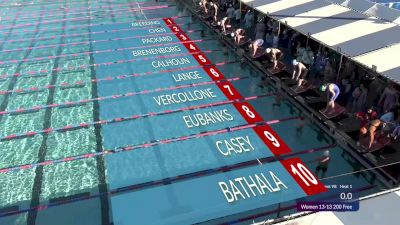 Replay: Finals - 2024 ISCA East Coast Elite Showcase | Apr 6 @ 4 PM
Replay: Finals - 2024 ISCA East Coast Elite Showcase | Apr 6 @ 4 PMApr 7, 2024
 Replay: Prelims Locker Side - 2024 ISCA East Coast Elite Showcase | Apr 6 @ 8 AM
Replay: Prelims Locker Side - 2024 ISCA East Coast Elite Showcase | Apr 6 @ 8 AMApr 6, 2024
 Replay: VMI vs Villanova - WWP - 2024 VMI vs Villanova | Apr 6 @ 11 AM
Replay: VMI vs Villanova - WWP - 2024 VMI vs Villanova | Apr 6 @ 11 AMApr 6, 2024
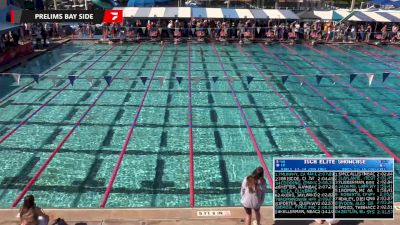 Replay: Prelims Bay Side - 2024 ISCA East Coast Elite Showcase | Apr 6 @ 9 AM
Replay: Prelims Bay Side - 2024 ISCA East Coast Elite Showcase | Apr 6 @ 9 AMApr 6, 2024
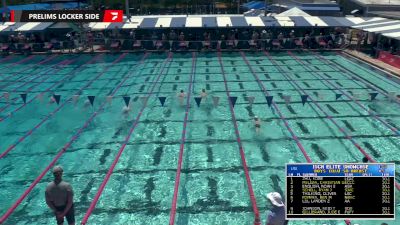 Replay: Prelims Locker Side - 2024 ISCA East Coast Elite Showcase | Apr 5 @ 8 AM
Replay: Prelims Locker Side - 2024 ISCA East Coast Elite Showcase | Apr 5 @ 8 AMApr 6, 2024
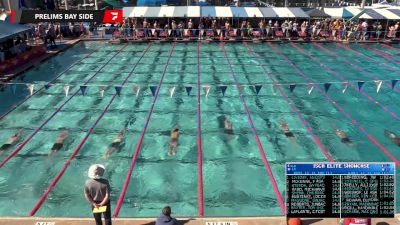 Replay: Prelims Bay Side - 2024 ISCA East Coast Elite Showcase | Apr 5 @ 8 AM
Replay: Prelims Bay Side - 2024 ISCA East Coast Elite Showcase | Apr 5 @ 8 AMApr 5, 2024
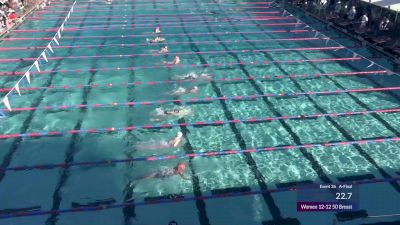 Replay: Finals - 2024 ISCA East Coast Elite Showcase | Apr 4 @ 4 PM
Replay: Finals - 2024 ISCA East Coast Elite Showcase | Apr 4 @ 4 PMApr 5, 2024